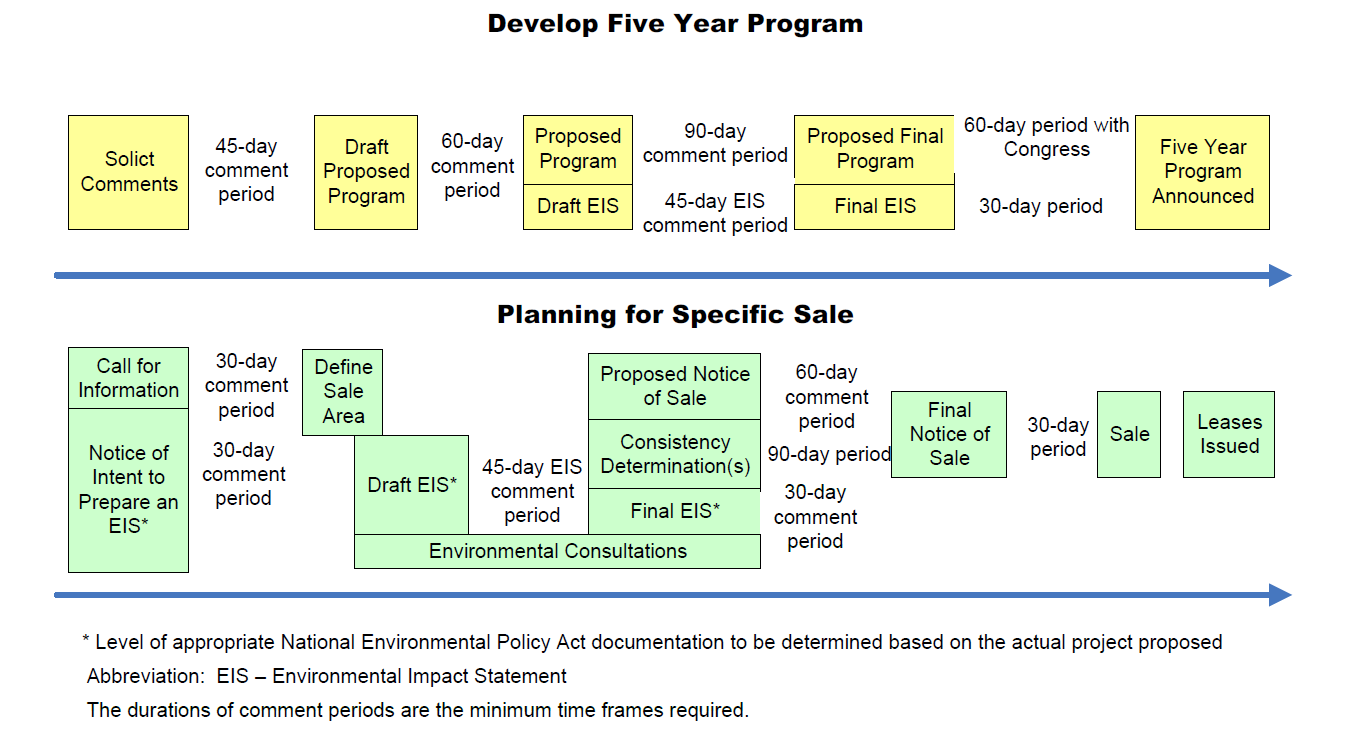In August of 2016, Cause of Action Institute (“CoA Institute”) submitted a Freedom of Information Act (“FOIA”) request, seeking the following information about the Outer Continental Shelf (“OCS”):
Because of the agency’s failure to release records responsive to this request, CoA Institute filed a FOIA lawsuit on November 11, 2016. Recently, the Bureau of Ocean Energy Management (“BOEM”) provided its 10th and final production. While CoA Institute is still in active litigation regarding this request, considering the new administration and its priorities, we thought it of value to discuss our findings to date. However, to fully understand the process, we believe that some background on the Outer Continental Shelf Lands Act (“OCSLA”), 43 U.S.C., is necessary.
The Outer Continental Shelf and OCSLA background
The outer continental shelf is made up of “all submerged lands lying seaward and outside of the area of lands beneath navigable waters…and of which the subsoil and seabed appertain to the United States and are subject to its jurisdiction and control.” OCSLA was enacted on August 7, 1953 and governs the policies and procedures related to the OCS. Under OCSLA, the Secretary of Interior (the “Secretary”) is responsible for the administration of mineral exploration as well as other OCS development (i.e., wind energy).[1] Further, through OCSLA, the Secretary may grant leases to the highest qualified responsible bidder based on sealed competitive bids.[2] OCSLA also provides guidelines for implementing an OCS oil and gas exploration and development program.[3] This program, the Outer Continental Shelf Oil and Gas Leasing Program, is commonly referred to as the “Five-Year Program”.
Specifications under the Five-Year Program
As provided in the OCSLA, the Five-Year Program shall have a schedule that indicates as precisely as possible, the size, timing and location of leasing activity best suited for national energy needs during the five-year period following its approval or re-approval.[4] In reviewing the five-year program, the BOEM looks at a variety of economic and environmental factors. The timing and location of exploration, development, and production of oil and gas on the OCS shall be based on consideration of eight factors.
These factors are:
“(A) existing information concerning the geographical, geological, and ecological characteristics of such regions; (B) an equitable sharing of developmental benefits and environmental risks among the various regions; (C) the location of such regions with respect to, and the relative needs of, regional and national energy markets; (D) the location of such regions with respect to other uses of the sea and seabed, including fisheries, navigation, existing or proposed sea-lanes, potential sites of Deepwater ports, and other anticipated uses of the resources and space of the outer Continental Shelf; (E) the interest of potential oil and gas producers in the development of oil and gas resources as indicated by exploration or nomination; (F) laws, goals, and policies of affected States which have been specifically identified by the Governors of such States as relevant matters for the Secretary’s consideration; (G) the relative environmental sensitivity and marine productivity of different areas of the outer Continental Shelf; and (H) relevant environmental and predictive information for different areas of the outer Continental Shelf.”
Further, the Five-Year Program provides that the Secretary shall request and contemplate input from federal agencies and the Governor of any State that could be affected under the proposed leasing program. Suggestions from local government executives in states that may be affected, which have been previously mentioned to the Governor of such State and any other person may also be considered. Under 43 U.S.C. §1331, the term “person” includes, in addition to a natural person, an association, a State, a political subdivision of a State, or a private, public, or municipal corporation.
The Five-Year Program “process includes three separate comment periods, two separate draft proposals, a final draft proposal, a final secretarial proposal, and development of environmental impact statement (EIS).” This process, takes approximately two and a half years to complete. As mentioned above, input from federal agencies, state and local government, and any other person, may be considered. After the Secretary approves the program, the Proposed Final Five-Year Program is sent to the President and Congress. After at least sixty days, the Secretary may approve the program. The Department of Interior cannot offer an area for lease without it being included in an approved Five-Year Program.
The Secretary shall review the leasing program approved under this section at least once a year. After Secretarial approval, the geographic scope of a lease sale area can be narrowed, cancelled, or delayed without the development of a new program. The Secretary shall, by regulation, establish procedures for various steps in the management process. Such procedures will apply to various activities, including any significant revision or reapproval of the leasing program.
This series will continue next week with a comparison between the requirements outlined above and the process that took place during the 2017-2022 planning process.
Any questions, commentary, or criticisms? Please email us at kara.mckenna@causeofaction.org and/or katie.parr@causeofaction.org
Katie Parr is a law clerk and Kara E. McKenna is a counsel at Cause of Action Institute.
[1] Bureau of Energy Management, BOEM, https://www.boem.gov/OCS-Lands-Act-History/ (last visited January 3, 2018).
[2] Id.
[3] Id.
[4] Id.


